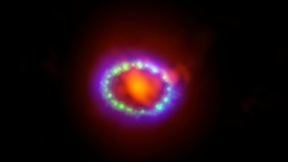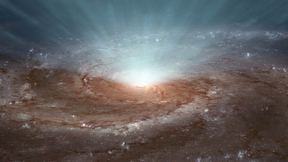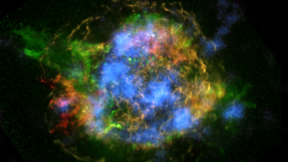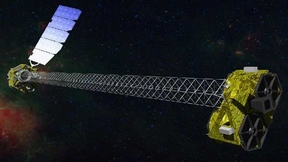Back
New results from the NASA NuSTAR telescope show that a supernova close to our galaxy experienced a single-sided explosion.A team of scientists including Lawrence Livermore National Laboratory researchers found that X-ray emissions taken with the Nuclear Spectroscopic Telescope Array (NuSTAR) show that the Supernova 1987A explosion was highly asymmetric. The results appear…
By looking at the speed of ambient gas spewing out from a well-known quasar, astronomers are gaining insight into how black holes and their host galaxies might have evolved at the same time.Using the Nuclear Spectroscopic Telescope Array (NuSTAR), researchers were able to use the X-ray spectra of an extremely luminous black hole (quasar PDS 456) to detect a nearly…
A supernova is the cataclysmic death of a star, but it seems its remnants shine on.Astronomers have found a pulsating, dead star beaming with the energy of about 10 million suns.This is the brightest pulsar -- a dense stellar remnant leftover from a supernova -- ever recorded, and was seen using NASA's Nuclear Spectroscopic Telescope Array, or NuSTAR.LawrenceLivermore LLNL…
For the first time, an international team of astrophysicists, including Lawrence Livermore National Laboratory scientists, have unraveled how stars blow up in supernova explosions. Using NASA's Nuclear Spectroscopic Telescope Array (NuSTAR ) -- a high-energy X-ray observatory -- the international collaboration created the first-ever map of radioactive material in a…
For astrophysicist Bill Craig and his team, NASA's NuSTAR will open up a whole new world. In fact, NuSTAR will allow them to observe a new class of objects in space, called extreme objects, which have never been seen. The Nuclear Spectroscopic Telescope Array (or NuSTAR), is the first focusing, high energy X-ray NASA satellite that will open the hard X-ray sky for…









